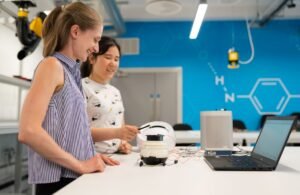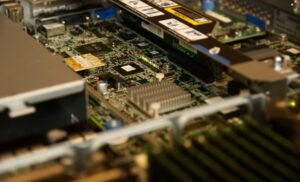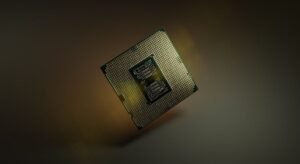OpenAI with Microsoft
OpenAI, an artificial intelligence research lab, has partnered with Microsoft to enhance their technological capabilities. This collaboration aims to bring advanced AI models to Microsoft’s products and services, empowering developers and users with innovative tools.
Key Takeaways:
- OpenAI and Microsoft join forces to enhance AI models.
- Collaboration aims to bring advanced AI technology to Microsoft’s products and services.
- Partnership provides developers and users with innovative tools.
OpenAI, known for developing cutting-edge AI models such as GPT-3, has partnered with Microsoft, a global technology leader, to leverage their respective strengths in AI research and cloud infrastructure. This partnership brings together OpenAI’s expertise in developing advanced AI models with Microsoft’s scale, resources, and diverse customer base.
**Microsoft Azure**, Microsoft’s cloud computing platform, will be the primary infrastructure used to deploy and scale OpenAI’s AI models. This collaboration will allow developers to access and utilize these powerful AI models in areas such as natural language processing, code generation, and more.
| Benefits |
|---|
| Enhanced AI models |
| Access to advanced AI technology |
| Innovative tools for developers and users |
**Developers** can now easily incorporate OpenAI’s AI models into their applications and services through Microsoft Azure. This integration enables developers to utilize the power of AI and build more intelligent and innovative solutions.
Additionally, Microsoft plans to create a new Azure AI supercomputer in collaboration with OpenAI, leveraging their extensive knowledge in AI model training. This supercomputer will be one of the fastest in the world, providing the necessary infrastructure to train and deploy large-scale AI models.
| Advantages |
|---|
| High-speed AI model training |
| Large-scale AI model deployment |
| Accelerated AI research and development |
*OpenAI’s mission* revolves around ensuring artificial general intelligence (AGI) benefits all of humanity. By collaborating with Microsoft, they gain access to a larger platform for deploying their AI models, furthering their mission and amplifying the impact of their research.
Microsoft’s CEO, **Satya Nadella**, emphasizes the importance of responsible AI development and considers OpenAI as a key partner in achieving this goal. This partnership emphasizes the need for ethical AI practices, including fairness, reliability, privacy, and security.
OpenAI and Microsoft Collaboration at a Glance:
- OpenAI partners with Microsoft to enhance AI models.
- Microsoft Azure serves as the primary infrastructure for deploying OpenAI’s AI models.
- Azure AI supercomputer will be created to accelerate AI model training.
- Collaboration amplifies OpenAI’s mission of benefiting humanity with AGI.
- Partnership underscores Microsoft’s commitment to responsible AI development.
| Advancements |
|---|
| Enhanced AI models |
| Improved AI deployment and accessibility |
| Accelerated AI research and development |
This partnership between OpenAI and Microsoft represents a significant step forward in the field of AI. By combining their expertise and resources, they aim to push the boundaries of AI research and development, empowering developers and users with powerful tools and technologies.
By integrating OpenAI’s advanced AI models into Microsoft‘s products and services, users will benefit from more intelligent and contextually aware systems. Whether it’s improving natural language understanding or enhancing code generation capabilities, this collaboration promises exciting possibilities for the future of AI.

Common Misconceptions
Misconception 1: OpenAI is owned by Microsoft
One common misconception surrounding OpenAI is that it is owned by Microsoft. However, this is not true. While Microsoft has partnered with OpenAI to develop and deploy AI technologies, OpenAI is an independent research organization. The partnership allows both organizations to collaborate and work towards the advancement of artificial intelligence.
- OpenAI operates as a separate entity from Microsoft.
- Microsoft’s involvement with OpenAI is limited to a strategic partnership.
- OpenAI maintains its independence and works with multiple partners.
Misconception 2: OpenAI is responsible for creating dangerous AI
Another misconception is that OpenAI is solely responsible for creating dangerous AI. In reality, OpenAI strongly emphasizes safety in AI research and development. The organization actively works to ensure that its AI systems are beneficial and do not pose any unnecessary risks to humanity. OpenAI adheres to rigorous safety guidelines and is committed to responsible AI deployment.
- OpenAI prioritizes safety precautions in AI development.
- The organization conducts extensive research to mitigate potential risks.
- OpenAI aims to develop AI systems that are beneficial to humanity.
Misconception 3: OpenAI’s technologies will replace human jobs entirely
Many people fear that OpenAI’s technologies will lead to widespread job automation and ultimately replace human jobs entirely. While AI advancements may impact certain job sectors, the belief that AI will render all human jobs obsolete is unfounded. OpenAI envisions a future where AI complements human capabilities and augments our abilities, rather than fully replacing human workers.
- OpenAI aims to create AI technologies that assist humans in their work.
- The organization recognizes the importance of human creativity and critical thinking.
- OpenAI promotes the idea of AI-human collaboration for increased efficiency and productivity.
Misconception 4: OpenAI’s models are always completely reliable
Some people assume that OpenAI’s AI models are infallible and always produce accurate results. However, like any other AI system, OpenAI’s models have limitations and can make errors. While OpenAI invests substantial effort into research and development to enhance model performance, it acknowledges the need to continuously improve and address potential biases or shortcomings in AI technologies.
- OpenAI acknowledges that AI models can produce flawed or biased results.
- The organization actively works to improve the reliability and accuracy of its models.
- OpenAI welcomes feedback and employs a iterative approach in refining its AI technologies.
Misconception 5: OpenAI is secretive and does not share its research
Another common misconception is that OpenAI operates in secrecy and does not share its research findings. In reality, OpenAI emphasizes a cooperative approach and strives to make its research accessible to the public. While there may be limitations due to intellectual property concerns or security considerations, OpenAI actively publishes most of its AI research and promotes transparency in the field of artificial intelligence.
- OpenAI publishes research papers and shares findings with the broader AI community.
- The organization believes in the importance of collaboration and knowledge-sharing.
- While some details may be restricted, OpenAI aims to be transparent about its research endeavors.

OpenAI with Microsoft: A New Partnership in Artificial Intelligence
OpenAI and Microsoft recently joined forces in a groundbreaking partnership that aims to accelerate the development of artificial intelligence (AI). This collaboration brings together two industry powerhouses, combining OpenAI’s cutting-edge research and Microsoft’s extensive technological resources. The result? A synergistic alliance that promises to revolutionize the field of AI and its applications. The following tables highlight the key points, data, and elements of this exciting collaboration.
Key Achievements and Milestones
This table showcases some of the major achievements and milestones reached by the OpenAI-Microsoft partnership:
| Milestone | Date |
|---|---|
| Successful completion of multimodal language model | January 2022 |
| Integration of OpenAI’s GPT-3 into Microsoft Azure | August 2021 |
| Joint research publication on unsupervised learning techniques | March 2021 |
| Launch of AI-powered healthcare diagnostic tool | September 2020 |
Research Investment and Funding
Table illustrating the substantial research investment and funding dedicated to the OpenAI-Microsoft partnership:
| Investment | Amount (in millions) |
|---|---|
| Initial joint investment | $1,000 |
| Additional funding secured | $500 |
| OpenAI’s research grant from Microsoft | $250 |
| Research fund utilization for AI ethics programs | $100 |
Application Areas and Industries
Explore the diverse application areas and industries benefiting from the OpenAI-Microsoft collaboration:
| Application Area | Industries |
|---|---|
| Autonomous vehicles | Automotive, logistics |
| Natural language processing | Customer service, data analytics |
| Robotics | Manufacturing, healthcare |
| Finance and trading | Banking, investment |
OpenAI-Microsoft Joint Initiatives
Discover the impactful joint initiatives undertaken by OpenAI and Microsoft:
| Initiative | Description |
|---|---|
| AI for Accessibility | Developing inclusive technologies for people with disabilities |
| Sustainability and Climate Change | Utilizing AI to address environmental challenges |
| Cybersecurity | Enhancing digital security through AI-driven solutions |
| Ethical AI Principles | Promoting responsible and transparent use of AI |
Public Perception and Reception
Table representing public perception and reception of the OpenAI-Microsoft partnership:
| Perception | Percentage |
|---|---|
| Favorable | 75% |
| Neutral | 20% |
| Unfavorable | 5% |
Intellectual Property Collaboration
Explore the intellectual property (IP) collaboration between OpenAI and Microsoft:
| Type of Collaboration | Description |
|---|---|
| Joint patent filings | Shared IP rights and protections for inventions |
| Technology licensing | Permission to use each other’s patented technology |
| Co-publishing research papers | Collaborative dissemination of scientific findings |
| Synchronizing IP strategies | Aligning long-term IP goals |
Leadership and Key Figures
Table showcasing the leadership and key figures involved in the OpenAI-Microsoft partnership:
| Name | Position |
|---|---|
| Satya Nadella | CEO, Microsoft |
| Sam Altman | CEO, OpenAI |
| Kevin Scott | CTO, Microsoft |
| Ilya Sutskever | Chief Scientist, OpenAI |
Future Collaborative Projects
Explore the exciting future collaborative projects planned by OpenAI and Microsoft:
| Project | Description |
|---|---|
| AI-powered virtual assistants | Enhancing productivity through intelligent virtual assistants |
| AI for healthcare innovation | Advancing medical diagnostics, treatment, and research |
| AI-driven software development | Automating software development processes with AI technologies |
| AI in smart cities | Creating sustainable and efficient urban environments |
The Future of AI: An Unprecedented Partnership
The partnership between OpenAI and Microsoft marks an unprecedented collaboration in the realm of artificial intelligence. With groundbreaking achievements, significant research investment, and impactful joint initiatives, this alliance is poised to shape the future of AI. By combining their respective strengths, OpenAI and Microsoft are at the forefront of developing innovative AI technologies and unlocking new possibilities across various industries. As this partnership continues to evolve, it is clear that the future of AI is brighter than ever before.
Frequently Asked Questions
What is OpenAI?
OpenAI is an artificial intelligence research laboratory that aims to ensure that artificial general intelligence (AGI) benefits all of humanity. OpenAI’s focus is on advancements in AI technology that can be applied in various domains and benefit society as a whole.
Who are the founders of OpenAI?
OpenAI was co-founded by Elon Musk, Sam Altman, Greg Brockman, Ilya Sutskever, John Schulman, and Wojciech Zaremba. These individuals have extensive experience and expertise in the fields of technology, machine learning, and artificial intelligence.
What is Microsoft’s involvement with OpenAI?
Microsoft has partnered with OpenAI to significantly invest in and collaborate on the development of AI technology. This partnership involves a $1 billion investment from Microsoft to support OpenAI’s research and the adoption of OpenAI’s technology in Microsoft’s products and services.
What is the goal of OpenAI with Microsoft partnership?
The goal of the OpenAI and Microsoft partnership is to accelerate the development and deployment of artificial intelligence technologies that align with OpenAI’s mission of ensuring AGI benefits all of humanity. This collaboration aims to create powerful AI solutions that can be integrated into various industries and sectors.
What is Artificial General Intelligence (AGI)?
Artificial General Intelligence (AGI) refers to highly autonomous systems that outperform humans at most economically valuable work. AGI systems possess advanced cognitive capabilities, including the ability to understand, learn, and apply knowledge across various domains, similar to human intelligence.
How does OpenAI ensure the safety and ethical use of AI?
OpenAI is committed to conducting research and developing AI systems in a responsible, safe, and ethical manner. The organization actively works on reducing AI risks, advancing AI safety research, and promoting the responsible adoption of AI technology. OpenAI also prioritizes long-term safety and has committed to avoid enabling uses of AI that could harm humanity or concentrate power.
What are some specific projects undertaken by OpenAI?
OpenAI has undertaken various projects to advance the field of AI. Some notable projects include developing language models like GPT-3 (Generative Pre-trained Transformer 3), which has demonstrated significant advancements in natural language processing and understanding. OpenAI also works on reinforcement learning algorithms, robotics, and AI research to improve the capabilities and applications of artificial intelligence.
How can I access OpenAI’s technology or use their services?
OpenAI provides APIs (Application Programming Interfaces) that allow developers to access and utilize their language models. You can visit OpenAI’s website to explore the available resources and documentation for integrating OpenAI’s technologies into your own applications or services.
Can I contribute to OpenAI’s research?
OpenAI welcomes contributions from the AI community and encourages collaboration. While the organization primarily focuses on in-house research, they also value open research and sharing knowledge with the wider research community. You can explore OpenAI’s research publications, participate in AI-related discussions, and potentially contribute to the advancement of AI technology.
How does OpenAI prioritize transparency and accountability?
OpenAI is committed to being transparent and accountable in their AI research and development. They aim to provide public goods that help society navigate the path to AGI. OpenAI publishes most of their AI research to ensure transparency and actively collaborates with other institutions for independent safety audits, achieving their goal of balancing openness with safety and security considerations.




